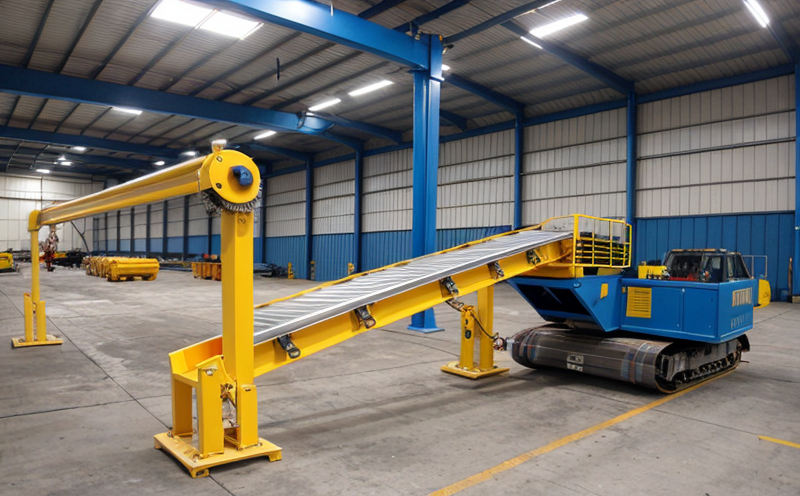EN 12158 Rope Pulley Performance Testing for Lifting Systems
The European Standard EN 12158 specifies a series of tests to ensure the performance and reliability of rope pulleys used in lifting systems. This standard is particularly important in sectors such as mining, where heavy loads need to be lifted safely and efficiently. The testing protocol outlined here ensures that the pulley system can withstand the rigors of industrial use without compromising safety or operational integrity.
The tests cover a range of critical parameters including load capacity, friction coefficient, wear resistance, fatigue strength, and dynamic loading performance. These parameters are crucial in ensuring the longevity and reliability of lifting systems used in industries such as mining. By adhering to these standards, companies can ensure that their equipment meets stringent safety requirements.
Load capacity testing assesses how much weight a pulley system can handle without failure. Friction coefficient tests measure the efficiency with which energy is transferred from the motor through the drive shaft and into the lifting mechanism. Wear resistance tests determine how well materials withstand abrasive forces over time, ensuring longevity in harsh environments.
Fatigue strength testing evaluates the ability of components to endure repeated stress cycles without failure. Dynamic loading performance tests simulate real-world operating conditions to ensure that pulleys can handle sudden changes in load or direction safely and efficiently. These tests are essential for industries where precision and safety are paramount, such as mining.
The testing process involves precise calibration and setup of equipment to replicate the working environment of a mine. Specimens are subjected to a series of controlled loads and stress cycles designed to mimic actual operational conditions. The data collected during these tests is meticulously analyzed using advanced software tools to ensure accuracy and reliability.
Testing adheres strictly to EN 12158, which provides detailed guidelines on specimen preparation, equipment calibration, and test procedures. Compliance with this standard ensures that the testing process remains consistent across different facilities, enhancing comparability of results and ensuring industry-wide acceptance.
| Test Parameter | Description |
|---|---|
| Load Capacity | The maximum weight a pulley can handle without failure. |
| Friction Coefficient | The efficiency of energy transfer from the motor to lifting mechanism. |
| Wear Resistance | How well materials withstand abrasive forces over time. |
| Fatigue Strength | The ability of components to endure repeated stress cycles without failure. |
| Dynamic Loading Performance | Evaluates the handling of sudden changes in load or direction safely and efficiently. |
Industry Applications
The testing protocol for EN 12158 is widely utilized across various industries, particularly those involving heavy lifting. Mining operations benefit greatly from this standard as it ensures that lifting systems are reliable and safe under extreme conditions.
- Mining: Ensures the safety of workers and equipment in harsh environments.
- Construction: Improves efficiency and reliability of lifting systems used in construction projects.
- Petrochemicals: Guarantees that lifting systems can handle heavy loads safely and efficiently.
Quality and Reliability Assurance
The testing process for EN 12158 is designed to provide a high level of quality assurance, ensuring that lifting systems meet or exceed industry standards. This ensures that equipment operates reliably under all conditions, reducing the risk of accidents and downtime.
Compliance with these tests not only enhances safety but also improves operational efficiency by preventing premature failures. The detailed documentation provided as part of the testing process allows for easy monitoring and maintenance, ensuring long-term reliability of lifting systems.
International Acceptance and Recognition
- EN 12158 is recognized by major industry bodies worldwide.
- The standard is referenced in numerous international standards including ISO, ASTM, EN, IEC.
- Adoption has been seen across Europe and parts of Asia where mining operations are extensive.





